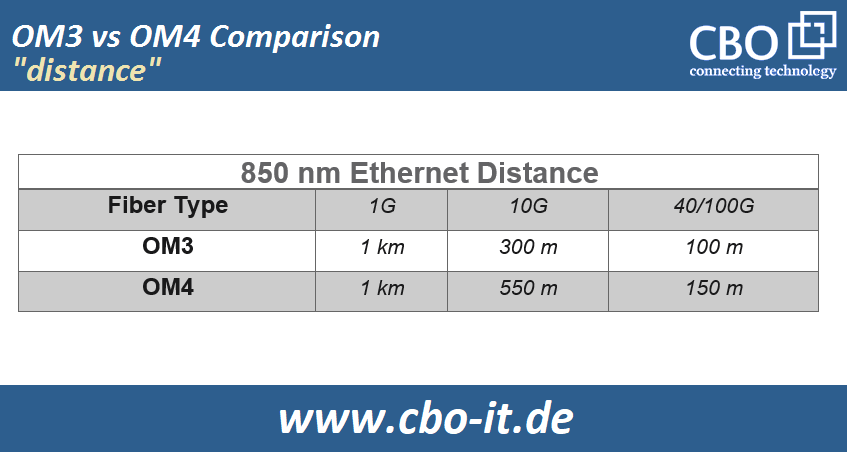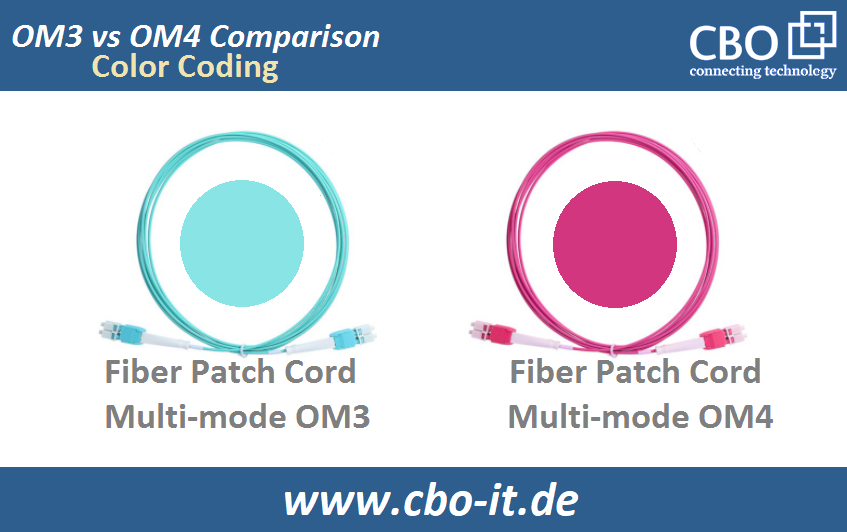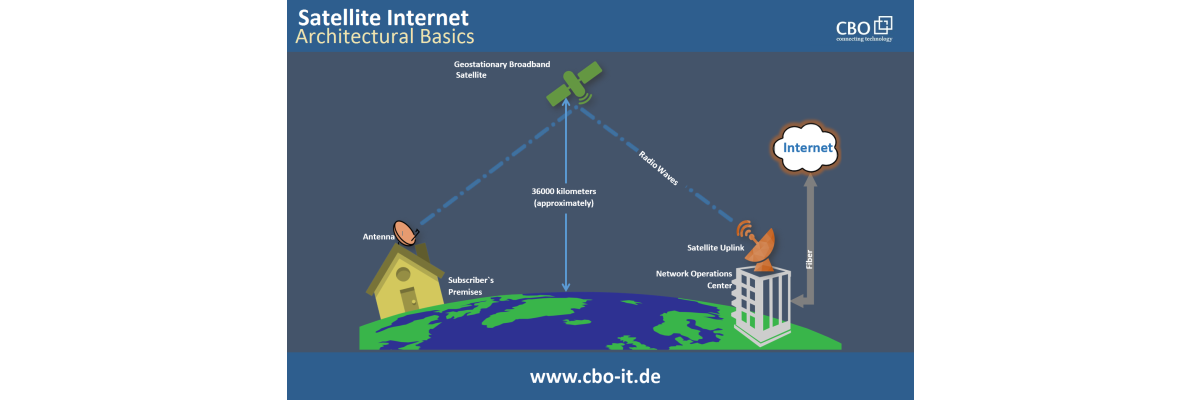OM3 and OM4 optical fibers are two types of laser-optimized multimode fibers (MMF) with 50/125µm fiber core size which are manufactured in compliance with the requirements as described by the ISO 11801 standard. OM3 and OM4 fibers come with many similarities such as applications and connectors. many similarities between the OM3 and OM4 fibers make it confusing for the users that which one they should purchase and why? In this article, we will discuss the differences between these two types of optical fibers in terms of major technical aspects such as speed, transmission distance, bandwidth, etc.
OM3 Vs. OM4 - Bandwidth
OM4 being superior to OM3 offers a higher modal bandwidth I.e. 4700 MHz-km – a number that is much better than the bandwidth of OM3 I.e. 2000 MHz-km. Modal bandwidth is an important factor that characterizes the tendency of an optical fiber to transmit a measured amount of data over a certain distance and within measured time. With higher modal bandwidth OM4 fiber can transmit more information than OM3 fiber over the same distance. In any optical fiber cable, the modal bandwidth is governed by the modal dispersion. it is the lower modal dispersion in OM4 optical fiber that results in the availability of higher bandwidth.
OM3 Vs. OM4 - Speed
According to available information, the OM3 optical fiber is intended to be deployed in 10 Gb/s applications. However, it can also be used in 40 and 100 Gb/s applications. On the other hand, OM4 fiber is designed for 10, 40, and 100G Ethernet. Both OM4 and OM3 fibers come with a tendency to support 40 and 100 Gb/second speeds when they are deployed with 8/12-fiber and 24-fiber MTP/MPO terminations respectively.

OM3 Vs. OM4 - Distance
The achievable transmission distance of OM3 and OM4 optical fiber cables varies concerning the application. The following exhibit has some summarized information about the achievable transmission parameters about the different transmission speeds.
As shown in the exhibit above, the OM4 offers better fiber distance than OM3 when deployed in 10G, 40G, and 100G configurations. Here, it is important to note that the achievable link distance of the OM4 optical fiber cable in the 10G configuration is still debatable. Ultra-high quality OM4 cables can achieve link distances up to 550 meters but the least recognized link distance achievable is 400 meters.
OM3 Vs. OM4 - Color Coding
When it comes to color coding of laser-optimized OM4 and OM3 type multimode optical fiber cables, things are not that clear yet. Both the OM3 and OM4 cables come with an aqua jacket when LC connectors are used for the termination of these cables. To solve this issue, a different color (I.e. Erika Violet) was introduced for OM4 fiber. Now, the OM3 cables terminated with MTP/MPO connectors are offered in aqua jackets whereas the OM4 optical fiber cables terminated with MTP/MPO connectors are offered in the Erika Violet jacket.

OM3 Vs. OM4 - Cost
Well, the cost of a multimode optical fiber cable is something that depends more on the construction type rather than the fiber type. Still, a slight discrepancy in the price between OM3 and OM4 based fiber patch cords and other parts may be witnessed in the market. Generally speaking, OM4 fiber-based patch cords cost a little higher than the OM3 fiber-based patch cords.
Can OM3 Optical Fiber Cable be Mixed and Matched with OM4?
In data centers and enterprise networks, most 10 GbE links do not exceed a length of 300 meters. Thus, the OM3 optical fiber cable can be considered as an obvious medium for data transmission in such networks. However, for 100 GbE and 40 GbE links you might need an OM4 cable especially when greater link distances are desired.
Both the OM3 and OM4 cables come with a similar core diameter. Thus, these two types of fibers are fully compatible with each other. As a rule of thumb, it should be understood that when two types of networking components with different performance levels are used in a tandem arrangement then the component with a lower performance level is expected to give optimum performance. As an example, when the OM4 and OM3 fiber cables are used then the OM3 cable will give optimum performance.
Conclusion
- Both OM3 and OM4 are viable for 10, 40, and 100 GbE networks
- Consider OM4 if you are looking for higher link distances
- OM3 and OM4 are fully compatible with each other
 English
English
 Deutsch
Deutsch
 Espaniol
Espaniol










